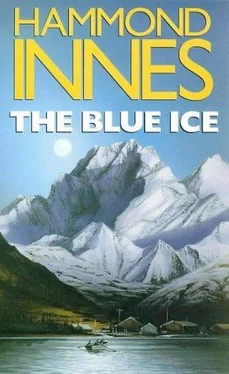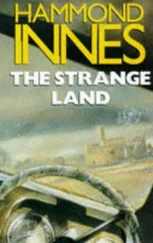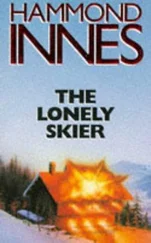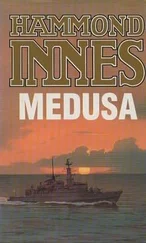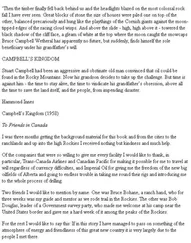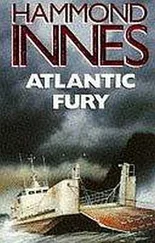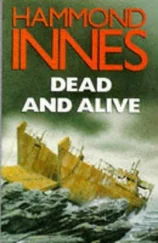A sudden urge of excitement swept through me. What other identification marks had Farnell got? I couldn’t think of any, but surely there must be something, some mark on his body. I turned to Jill. ‘Jill,’ I said. ‘Is there anything by which you would know George Farnell, other than his face and the little finger on his left hand?’
Something in my voice must have communicated itself to her, for she stopped sobbing and turned her head towards me. ‘Why do you want to know?’ she asked.
‘Because I want to know if this is, in fact, the body of George Farnell.’ I had spoken slowly, and as I finished she straightened up and came towards the coffin.
I pulled the shroud over the corpse. ‘No,’ I said. ‘It’s not a — a very pretty sight. Just tell me — will you? Anything by which I can identify him?’
‘Yes,’ she said. Her voice was quite clear now. ‘He had marks on the soles of his feet. The Nazis caught him once here in Norway. They beat the soles of his feet. But he wouldn’t talk and they released him.’
I looked down at the coffin. Both feet were intact — one was twisted round where the ankle had been broken, that was all. I forced the stiffened right leg out of the coffin and shone my torch on to the sole of the foot. It was unmarked. So was the other. I looked up at Jill. Her eyes were bright with excitement. ‘Are you certain about that?’ I asked.
‘Yes. Yes, of course, I’m certain. They were like white scars. Are they there?’
‘No,’ I said.
‘And there was the mark of a bullet under the right armpit.’
I forced up the right arm. There was no mark under the armpit.
I stood up then and crossed over to her. ‘Jill,’ I said. ‘You’re quite certain about those identification marks?’
‘Yes,’ she answered. She clutched my arm. ‘That’s not George then — is it? That can’t be George if those marks aren’t there.’
‘No,’ I said. ‘That is not the body of George Farnell. It’s somebody else’s body.’
‘But — but how did it get there?’ Curtis asked.
I looked at him. Life had been such a very straightforward business for him. ‘That man has been murdered,’ I said.
‘But Farnell’s — papers were found on the body.’
‘Exactly,’ I said and glanced at Jill. Her eyes met mine and I saw that she had understood the point. I turned to Curtis. ‘The body has been mutilated in such a way that it would be identified as Farnell’s if the necessary papers were found on it.’
‘But why?’ he asked.
‘What’s it matter why?’ Jill said. ‘He’s alive. That’s all that matters.’
I looked at her and felt a deep pity. That was all that mattered, was it? For the moment, perhaps. But later …
‘Where do you think he’ll have gone?’ she asked.
‘That we must find out from Sunde,’ I said.
‘Sunde?’ Her face looked blank for a moment and then she stared. ‘You mean the man that jumped overboard from the catcher-’
‘Yes,’ I said. ‘That was Farnell.’ I nodded to the body at my feet. ‘This is Schreuder.’
‘Then Farnell-’ Curtis checked himself.
I nodded. ‘Looks like it,’ I said. ‘Now let’s put the body back and then we’ll go and talk to Sunde.’
The Saeter Hut
The shock of discovering that the body was Schreuder’s and that Farnell was alive seemed to leave Jill completely stunned. She stood quite still, with a dazed expression on her face, as we put the coffin back and filled in the grave. The frozen slabs of earth rattled on the thin pine lid with a hollow sound. We replaced the sods and the little wooden cross with Bernt Olsen’s name on it and then went down to the boat. Nobody spoke as we rowed back to the ship. Occasionally I glanced at Jill seated on the thwart opposite me. Her face was set and expressionless. I wondered what was going on in her min
